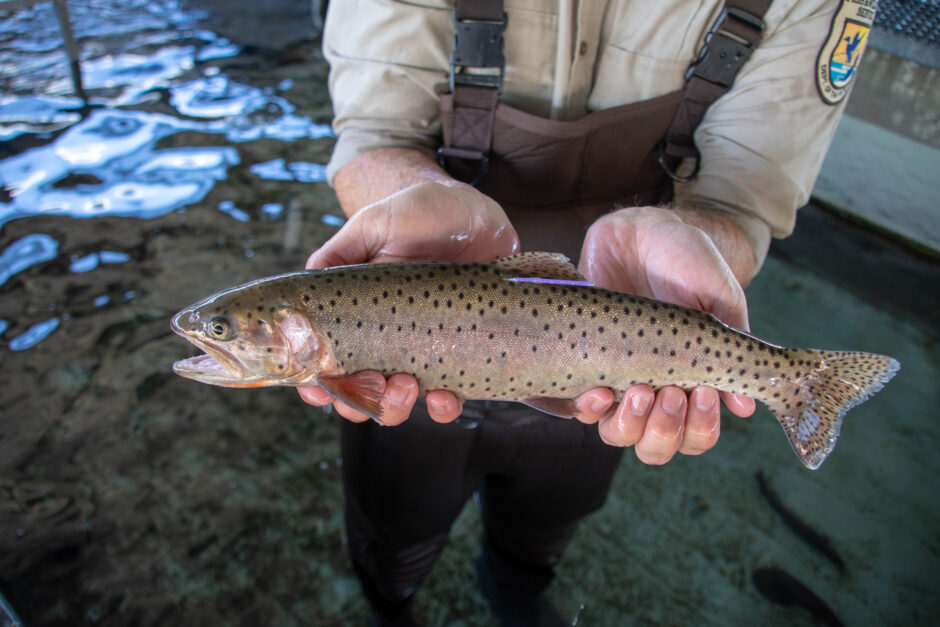Predation Tags: Innovative Fish Tracking
 Lahontan cutthroat trout with floy tag. (Credit: Joanna Gilkeson / USFWS via Flickr Public Domain)
Lahontan cutthroat trout with floy tag. (Credit: Joanna Gilkeson / USFWS via Flickr Public Domain)Fish tagging has been a common practice for years, usually helping researchers track the movement of fish through a fishery or the return of migratory fish. While there are many different kinds of fish tags, the most common type are plastic tags and telemetry tags. With all fish tagging initiatives, the cost—price compared to the quality of data collected—must be considered, particularly when many of these tags are lost to predation or the loss of the tagged specimen. For telemetry tags, the host being eaten can result in skewed data as predator movement is reported due to the tag sitting in its belly.
Predation Tags
Before the creation of predation tags, researchers had to rely on alternative methods of determining whether tagged fish had been eaten. For example, two tags recorded traveling close together for a long time would indicate that two tagged fish had been eaten.
Because telemetry tags can be quite expensive, researchers and fishery managers want to ensure the devices will gather consistent and accurate data. While predation of tagged fish isn’t ideal, it’s well understood that it’s a possible outcome.
Seeking to mitigate some of these issues, several companies have released predation tags in recent years. Depending on the company, the predation tags function differently. Innovasea predation tags work by indicating when digestion has begun, triggered by a polymer being digested. Similarly, VEMCO predation tags also report predation based on the digestion of a specific polymer.
Much like normal acoustic tags, the predation equivalent works by fish swimming around an area with multiple acoustic receivers. The receivers are pinged when the fish is within range, stored internally, and collected later.
Conclusion
Because fish tagging can be such an expensive endeavor, it’s important that the data reported is good quality and not tarnished by inaccuracies. When researchers review the collected data, the tags report when the fish has been eaten, taking the guesswork out of determining if a fish has been eaten. The tags help improve the accuracy of data collected during tagged studies as well as providing more detail.
Without predation tags, researchers may not detect when a fish has been eaten, skewing data and painting misleading behaviors of the targeted species. The tags help ensure that the loss of a tagged fish doesn’t go unnoticed, and the data can be separated, preventing any accidental inclusion of predator behavior.



0 comments